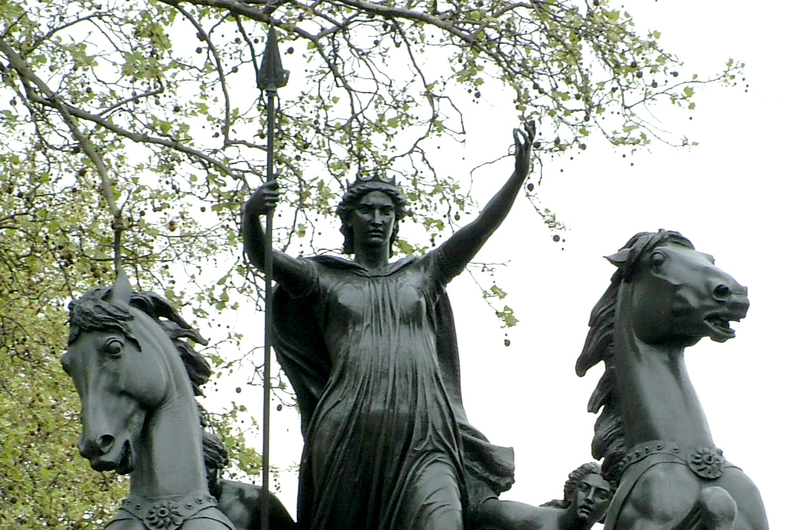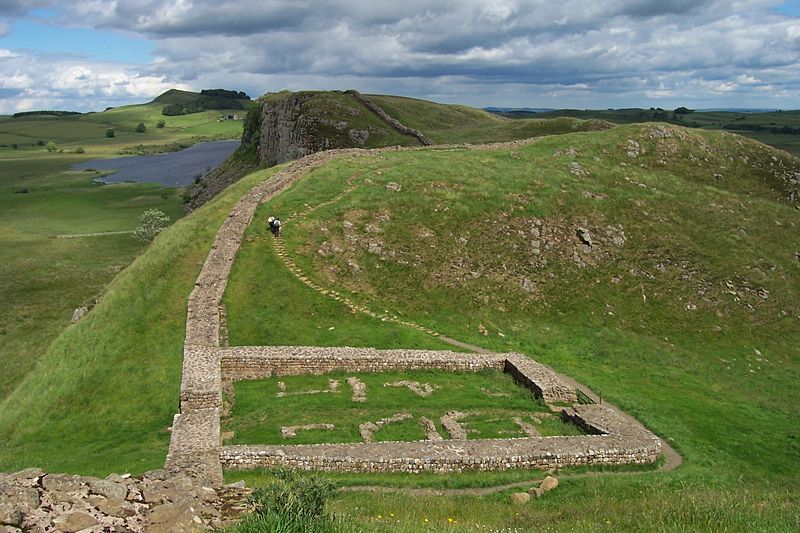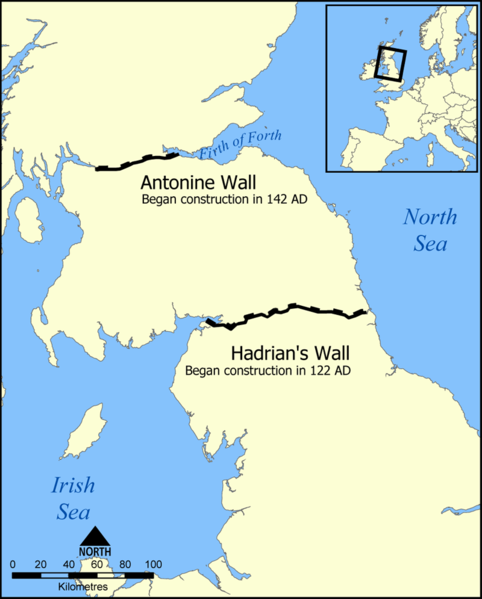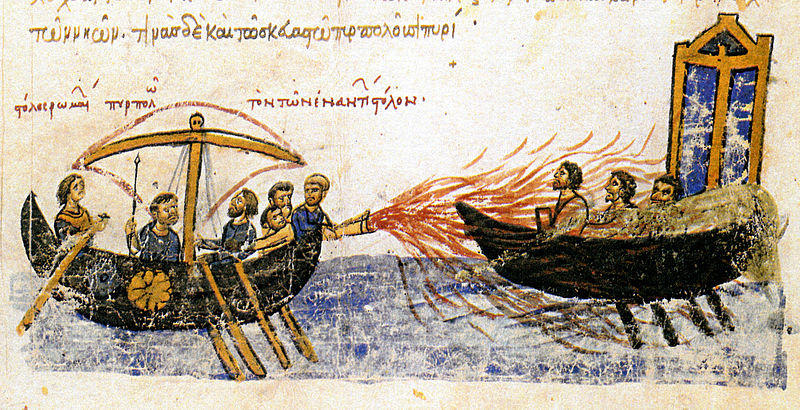Game of Thrones & Ancient Rome: Part I Posted by Brittany Britanniae on Apr 16, 2014 in Roman culture
The popular book and television series, Game of Thrones, portrays a world rich with magic, adventure, romance, and history. While most fans of the series thoroughly enjoy the refreshing originality of the series; others would say that Game of Thrones is simply a fantastical interpretation of actual historic events and themes. In this post, I will attempt to analyze some of these historic references that may be obvious or not so obvious. While it is known that a majority of the history that Game of Thrones is based on is much later than Ancient Rome (1400’s or later); I would argue that there are several examples from Ancient Rome that relate to this series.
DISCLAIMER: If you are new to the series and are not up to date on the HBO series’ episodes, I should warn you that there are spoilers ahead! I will not be discussing any events that lie beyond the current HBO series (The Lion and The Rose;Episode S4E2) as I do not wish to deter those who have not read the books from this post. Any quote from the books will not reveal any spoilers or new information.
1) The Wall vs. Hadrian’s Wall
The author, George R.R. Martin, has acknowledged openly his inspiration of The Wall from Hadrian’s Wall:
Certainly the Wall comes from Hadrian’s Wall, which I saw while visiting Scotland. I stood on Hadrian’s Wall and tried to imagine what it would be like to be a Roman soldier sent here from Italy or Antioch. To stand here, to gaze off into the distance, not knowing what might emerge from the forest. Of course fantasy is the stuff of bright colours and being larger than real life, so my Wall is bigger and considerably longer and more magical. And, of course, what lies beyond it has to be more than just Scots. (SF Site Interview; found here.)
Hadrian’s Wall was begun in 122 CE by Emperor Hadrian. The origin for its purpose vary from military defense, to protection from immigration, smuggling, or simply a demonstration of power. Perhaps it was built for all these reason (or none of them).One text, Scriptores Historiae Augustae: Vita Hadriani, claims:
“(Hadrian) was the first to build a wall 80 miles long to separate the Romans from the barbarians”
In the series, one of the main characters (Jon Snow) gives his account upon seeing The Wall for the first time:
Almost seven hundred feet high it stood, three times the height of the tallest tower in the stronghold it sheltered. His uncle said the top was wide enough for a dozen armored knights to ride abreast. The gaunt outlines of huge catapults and monstrous wooden cranes stood sentry up there, like the skeletons of great birds, and among them walked men in black as small as ants. – Jon Snow’s first impression of ” The Wall.”
The following video is of Jon Snow seeing The Wall for the first time (please excuse any add-ons; this was the only video available):
2) Daenerys Targaryen vs. Boudicca
In Game of Thrones, the once proper and submissive princess is transformed through the series into a barbaric queen, a destitute widow, a mother of dragons, a sacker of cities, and a mother of freed slaves. Daenerys Targaryen is interesting character that evolves quite rapidly and adapts to each of her roles. She is one of the strongest female characters within the series. Here is a perfect quote concerning her character:
I know that she spent her childhood in exile, impoverished, living on dreams and schemes, running from one city to the next, always fearful, never safe, friendless but for a brother who was by all accounts half-mad…a brother who sold her maidenhood to the Dothraki for the promise of an army. I know that somewhere upon the grass, her dragons hatched, and so did she. I know she is proud. How not? What else was left her but pride? I know she is strong. How not? The Dothraki despise weakness. If Daenerys had been weak, she would have perished with Viserys. I know she is fierce. She has survived assassins and conspiracies and fell sorceries, grieved for a brother and a husband and a son, trod the cities of the slavers to dust beneath her dainty sandalled feet.
Here is an example of her strength and wit from season 3:
Daenerys Targaryen is highly reminiscent of the strong barbarian queen Boudicca. According to historians, Boudicca was a capable military leader whose hair is often remarked upon (not unlike Daenerys):
She was “possessed of greater intelligence than often belongs to women”, that she was tall and had hair described as red, reddish-brown, or tawny hanging below her waist. Dio also says she had a harsh voice and piercing glare, and habitually wore a large golden necklace (perhaps a torc), a many-coloured tunic, and a thick cloak fastened by a brooch.

Boadicea by Thomas Thornycroft, standing near Westminster Pier, London. Courtesy of Wikicommons & Jpb1301.
Similarly both women find that the death of their husband (in Boudicca’s case) and/or father (in Daenerys’) lead to their doom and exile. However, these deaths do not defeat their spirits, but invigorate them to become warriors. For example, Boudicca leads an uprising against the Romans just as Daenerys plans to lead an uprising against those in Westeros. They both seek to take revenge upon those that have wronged (Westeros and Rome) them whilst avenging the injustices inflicted upon themselves. On a side note, it would seem that Boudicca’s fashion was a point of inspiration for Daenerys as both Khaleesi and the Mother of Dragons (large necklace, multi-colored tunic, etc.)
For another look at Daenerys and historic figures; check out her comparison to Henry VII: here.
3) Weddings
Wedding are known for being a joyous event in which man and woman become one family and their families in turn recognize and honor the union. However, this would seem not to be the case for weddings in Game of Thrones. They are political advancements, bring short-lived joy, and bloody. First there was the Red Wedding and now just this week: the Purple Wedding. In the series, weddings appear to be an event in which people die and the story’s plot takes an unprecedented turn.
In Ancient Rome, there are various accounts historic and mythological that portray the setting of a wedding, but produce death and havoc.
-
Messalina’s marriage to Sentaor Gaius Silius; although she was already married to the emperor. This action resulted in their deaths.
- Wedding feast of Pirithous, which resulted in the battle of Centaurs and Lapiths (here).
- Medea’s poisoned wedding gifts to Jason’s new soon-to-be wife Glauce, which killed Glauce and Medea’s children.
- Dido, who believes her and Aeneas are married due to their sexual union, kills herself on their “wedding night” because he leaves her.
- And while it is not ancient, to anyone who didn’t know that the Red Wedding was based on the Black Dinner; here.
4) The Seven and Lord of Light vs. Roman Pantheon and Christianity
In Game of Thrones, religion is a topic sparks (literally-hehe) controversy, allies, and enemies. The Faith of Seven (shown as a seven pointed star) includes seven deities, the Iron Islands have the Drowned God, the North has the Old Gods, and the newest addition- the Lord of Light. The similarities between theses deities and ancient gods can be seen in every region, but within ancient Rome they are as follows:
- The Father (JUPITER) represents divine justice, and judges the souls of the dead.
- The Mother (JUNO) represents mercy, peace, fertility, and childbirth. She is sometimes referred to as “the strength of women”.
- The Maiden (DIANA) represents purity, love, and beauty.
- The Crone: (CERES) represents wisdom and foresight. She is represented carrying a lantern.
- The Warrior: (MARS) represents strength and courage in battle.
- The Smith: (VULCAN) represents creation and craftsmanship.
- The Stranger: (PLUTO)represents death and the unknown. It is rarely prayed to.
These seven deities which are the most popular in Westeros and reflect (as I have implied) the Roman pantheon. The other two gods are as followed:
- The Drowned God: (NEPTUNE) represent maritime skills and seafaring ability.
- The Old Gods of the Forest: (TITANS) represent a personal and less structured deity/religion than other religions, though some basic social violations are proscribed by it, such as kinslaying, incest, and bastardy. It also upholds the laws of hospitality.
The Old Gods seem reminiscent to the idea of “the natural order” of things. This is why I say they are symbolic for the nature and primordial titans: Cronus , Rhea, Oceanus, Themis, Hyperion (and I would include Uranus and Gaia).
All of these deities being old and ancient, but within the series become undermined by the upcoming religion of R’hllor:
- R’hllor: The Lord of Light: (CHRISTIANITY) is a centered belief in the existence of a single, all-powerful god. R’hllor or The Lord of Light (Judeo-Christian God) is the god of fire, which provides light, heat, and life, and struggles against darkness, cold, and death, represented by an opposing deity, the Great Other (Devil, Satan, Evil). He is often referred to as the “one true god.”
The following was said of The Lord of Light by George R.R. Martin:
The R’hllor religion is strongly influenced by the real-life religion of Zoroastrianism. The central element it borrows is that it is a ditheistic religion: there is one true, “Good” God, locked in eternal combat with an evil deity. As part of this dualism R’hllor, who embodies light, fire, and heat, is opposed on the level of primordial forces by the “Great Other” who embodies cold and darkness.
5) Wild Fire vs. Greek Fire
In Game of Thrones, wildfire is a dangerous liquid which can explode with tremendous force and burns with a fire that water cannot extinguish, only large quantities of sand. Wildfire is identifiable through the distinctive green hue of its flames. Even in its stored liquid state it gives off a green color.
In reality, George R.R. Martin most likely took inspiration from Greek Fire:
Greek fire was an incendiary weapon used by the Eastern Roman (Byzantine) Empire. It was typically used it in naval battles to great effect as it could continue burning while floating on water. It provided a technological advantage, and was responsible for many key military victories. Although the term “Greek fire” has been general in English and most other languages since the Crusades, in the original Byzantine sources it is called by a variety of names, such as “sea fire,” “Roman fire,” “war fire,” “liquid fire,” or “manufactured fire.”
GAME OF THRONES & ANCIENT ROME: PART II
Next week, we will be looking at Tyrion Lannister, the map of Westeros, animal symbolism, the Night’s Watch, Jon Snow, the King’s Guard, and more!

Build vocabulary, practice pronunciation, and more with Transparent Language Online. Available anytime, anywhere, on any device.
About the Author: Brittany Britanniae
Hello There! Please feel free to ask me anything about Latin Grammar, Syntax, or the Ancient World.







Comments:
Ioan:
It isn’t mentioned much in the show, but it’s when discussing these comparisons, it’s well worth talking about ‘Ancient Valyria’ which is talked about in the books quite a lot.
It was basically an Ancient Civilization from thousands of years ago who built very straight roads, had superior building skills,and whose ruins still dot the landscape. Valyria, situated far away across the sea, quickly expanded their empire and attempted an invasion of Westeros, before their empire collapsed very suddenly. Scholarship still goes on in ‘Ancient Valyria’ and lots of the nobles can still speak it – Tyrion and Daenerys particularly. It’s clearly supposed to be the language of education and intelligence.
Westerosi civilization is very much in the shadow of Valyria just as Medieval was in the Roman.
Ioan:
Oh no, no editing facility? I meant “High Valyrian” I think (commoners in ex-Valyrian lands still talk a form of ‘Bastard Valyrian’ I think – just like vulgar Latin.)
I forgot to say I enjoyed the post as I always find these subtle classical references really interesting in constructed worlds.
Katherine:
This was a great article, Brittany!! : ) Thanks for taking the time to put all these comparisons together. I’m really looking forward to Part II!
Frefre:
I think Danaerys is more assimilable to Zenobia, then Boudicca…
Spencer Brockmann:
I just added this webpage to my feed reader, excellent stuff. Cannot get enough!